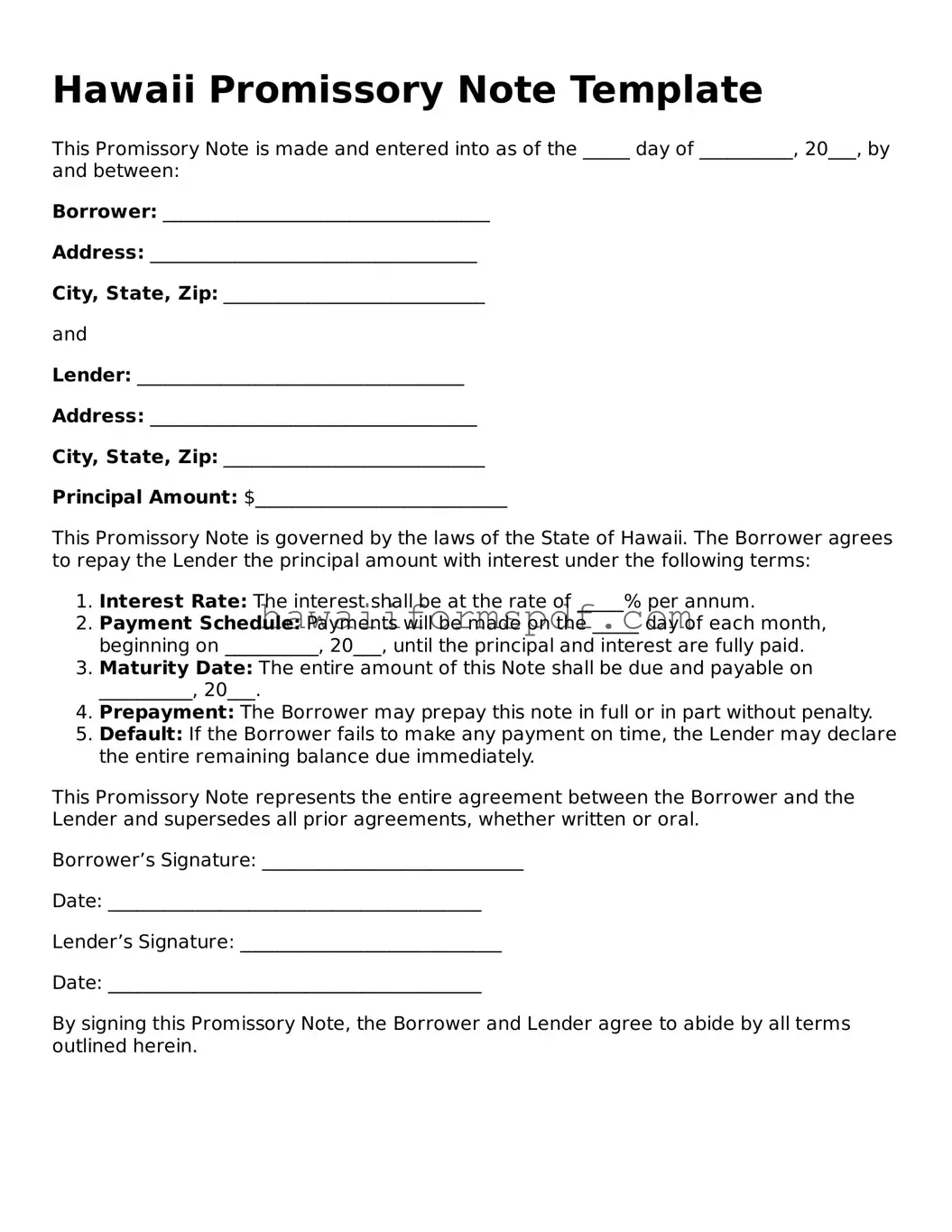Hawaii Promissory Note Template
This Promissory Note is made and entered into as of the _____ day of __________, 20___, by and between:
Borrower: ___________________________________
Address: ___________________________________
City, State, Zip: ____________________________
and
Lender: ___________________________________
Address: ___________________________________
City, State, Zip: ____________________________
Principal Amount: $___________________________
This Promissory Note is governed by the laws of the State of Hawaii. The Borrower agrees to repay the Lender the principal amount with interest under the following terms:
- Interest Rate: The interest shall be at the rate of _____% per annum.
- Payment Schedule: Payments will be made on the _____ day of each month, beginning on __________, 20___, until the principal and interest are fully paid.
- Maturity Date: The entire amount of this Note shall be due and payable on __________, 20___.
- Prepayment: The Borrower may prepay this note in full or in part without penalty.
- Default: If the Borrower fails to make any payment on time, the Lender may declare the entire remaining balance due immediately.
This Promissory Note represents the entire agreement between the Borrower and the Lender and supersedes all prior agreements, whether written or oral.
Borrower’s Signature: ____________________________
Date: ________________________________________
Lender’s Signature: ____________________________
Date: ________________________________________
By signing this Promissory Note, the Borrower and Lender agree to abide by all terms outlined herein.
